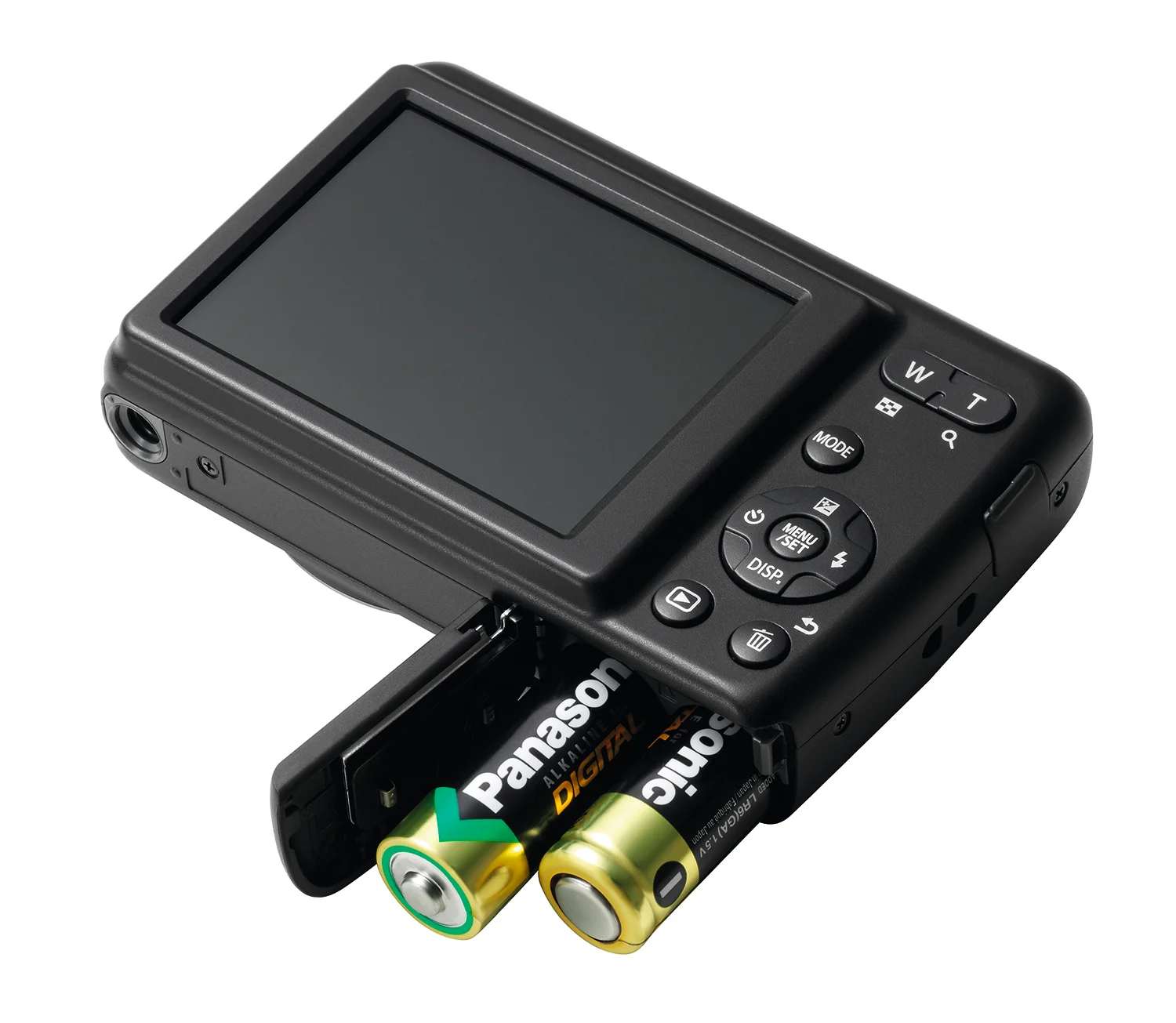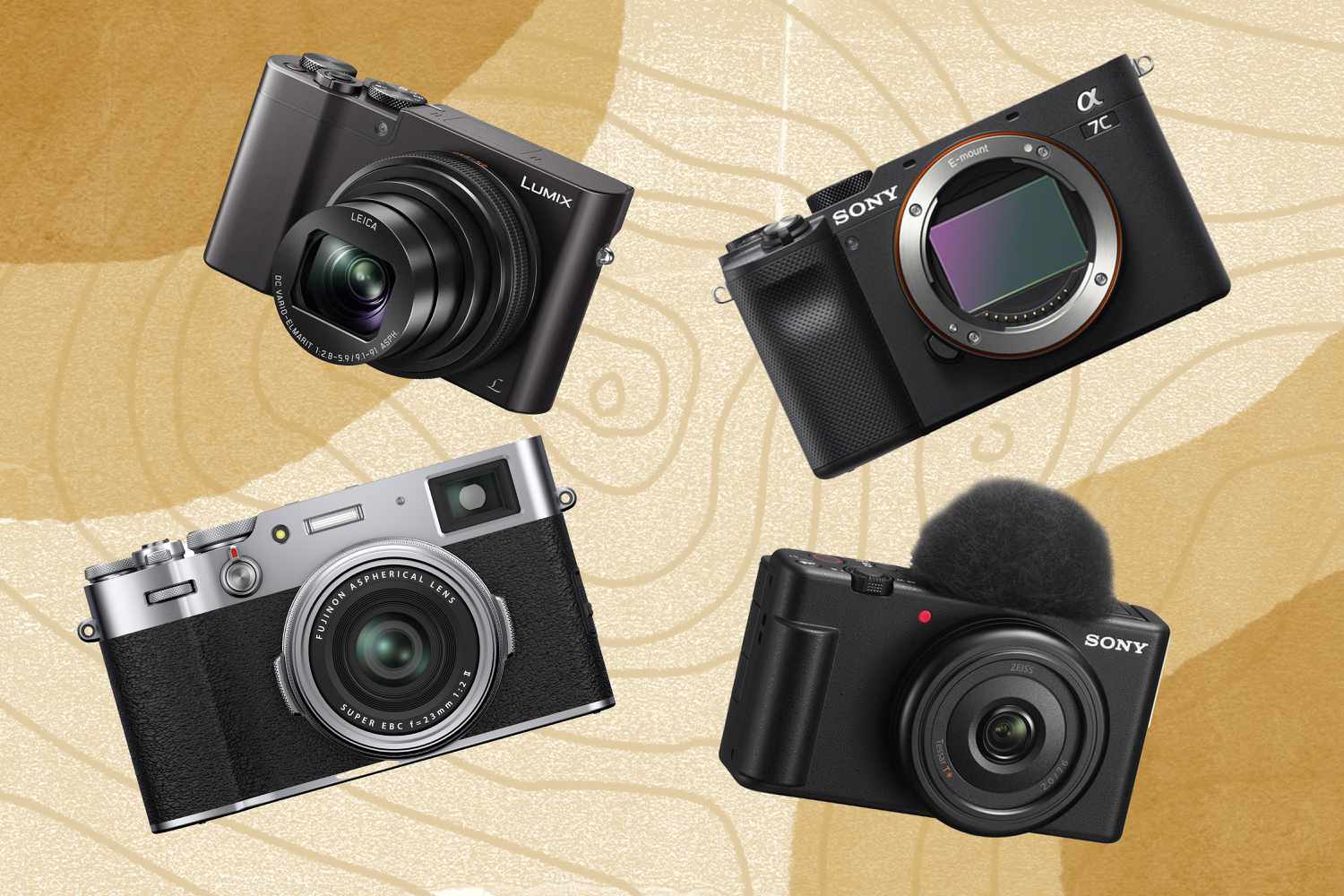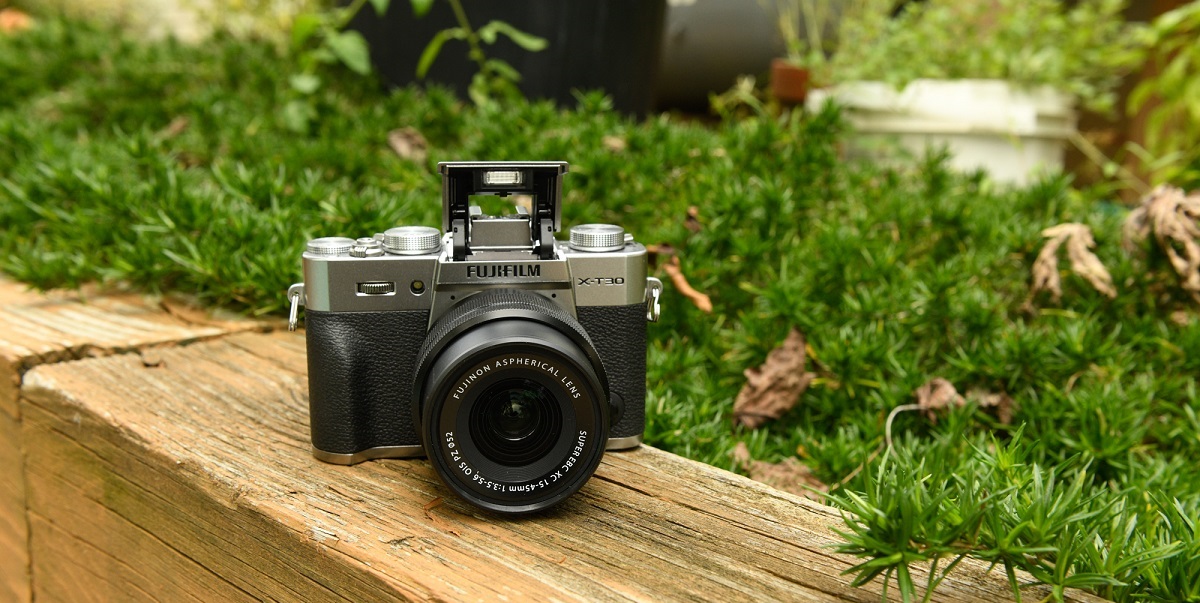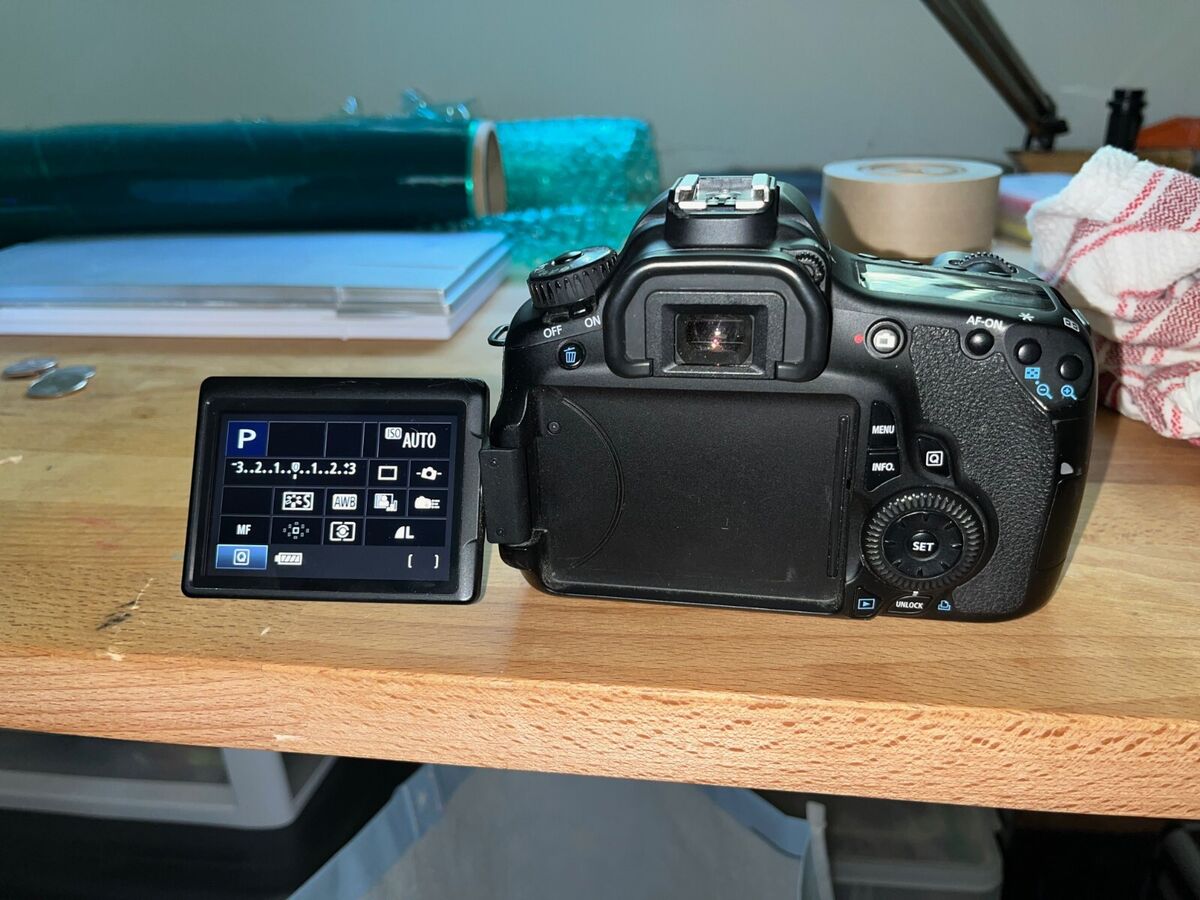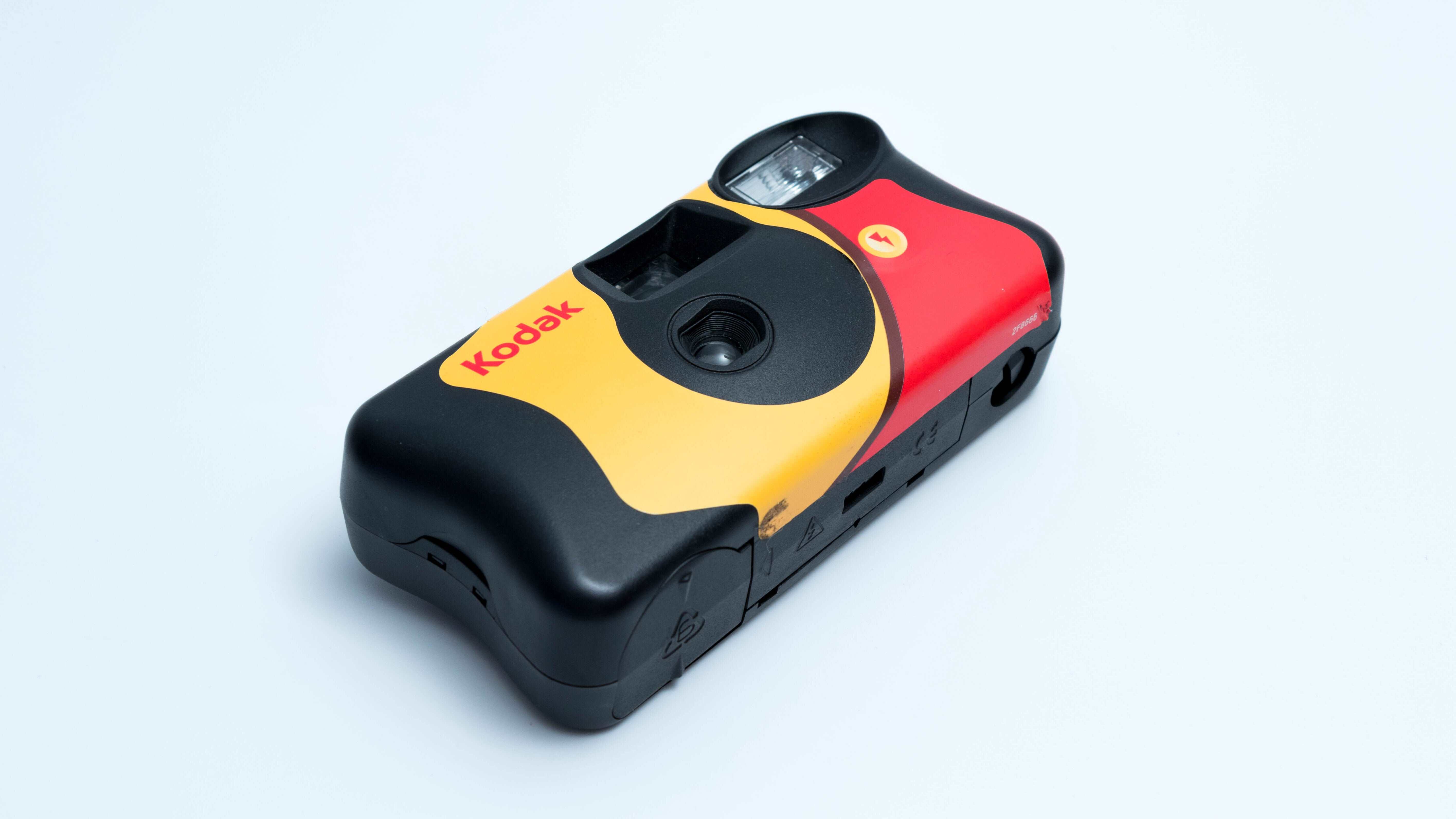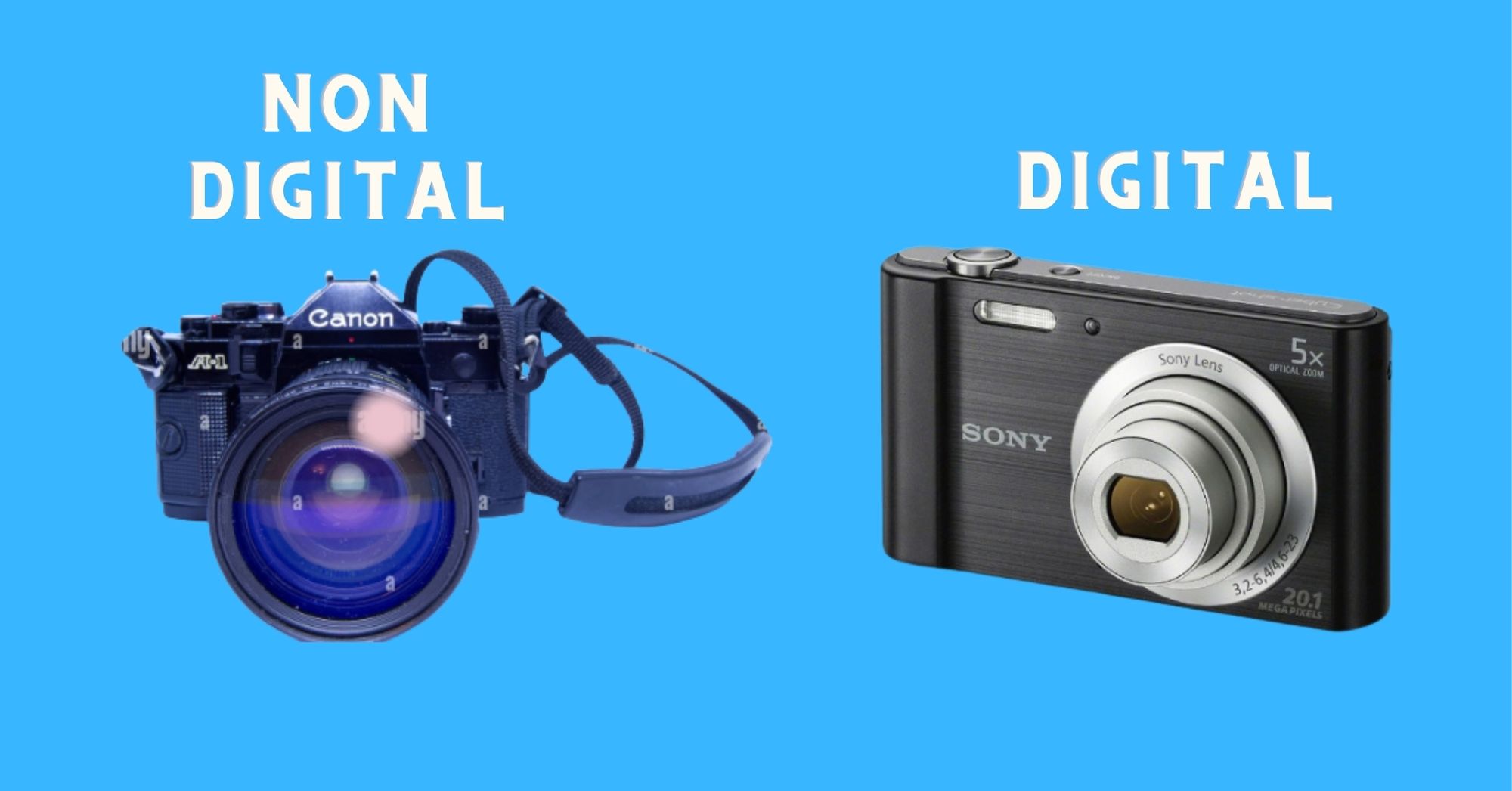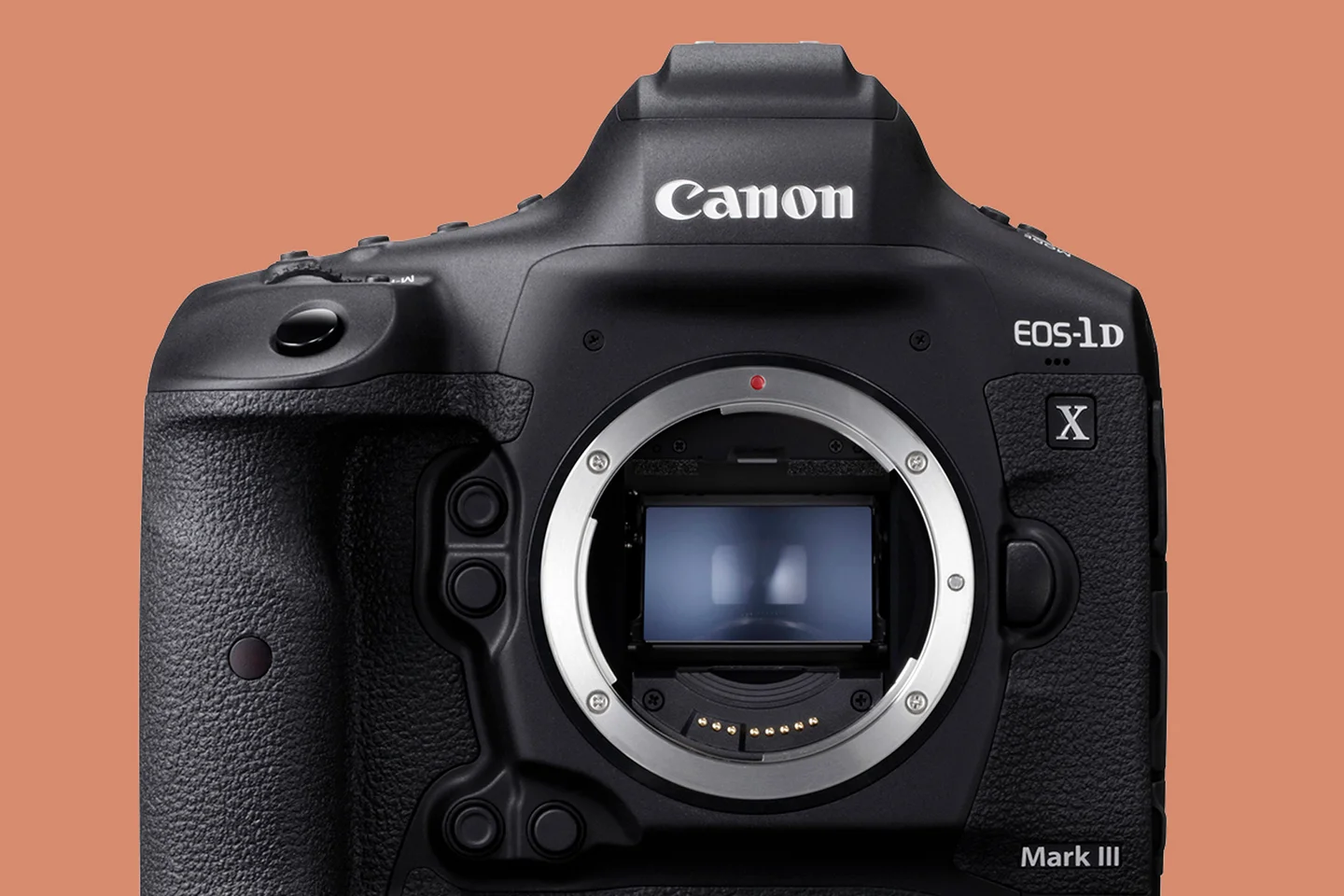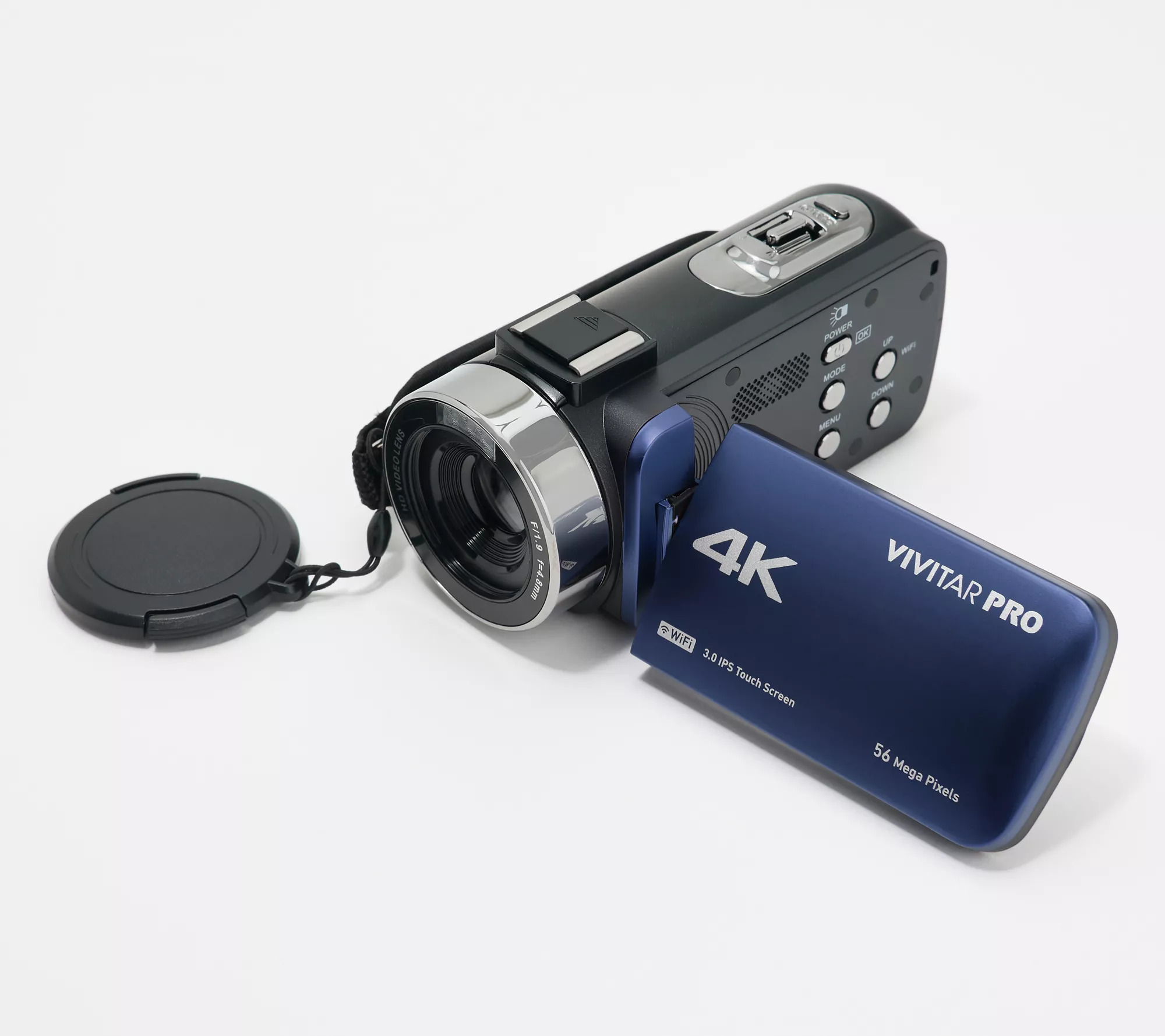Introduction
Welcome to the world of digital photography, where capturing moments has never been easier. Whether you’re a professional photographer or an amateur enthusiast, having a reliable battery for your digital camera is essential. With numerous options available on the market, it can be challenging to determine which battery is the best fit for your camera. In this article, we will explore the most popular types of digital camera batteries, their features, and factors to consider when making a decision.
When it comes to digital camera batteries, three primary types dominate the market: lithium-ion (Li-ion), nickel-metal hydride (NiMH), and alkaline batteries. Each type has its advantages and disadvantages, so understanding the characteristics of each can help you make an informed choice.
Lithium-ion batteries are the most common and widely used batteries in digital cameras. They offer a higher energy density, which allows for a smaller and lighter battery size while delivering longer run times. Additionally, these batteries have a low self-discharge rate, meaning they can hold their charge for longer periods when not in use. This makes them highly suitable for photographers who need reliable performance and extended shooting sessions.
Nickel-metal hydride (NiMH) batteries are another popular option, especially for those who prioritize affordability and eco-friendliness. These batteries have a higher capacity and can be recharged numerous times, making them cost-effective and environmentally friendly in the long run. However, they have a higher self-discharge rate compared to lithium-ion batteries, which can limit their usefulness if left unused for extended periods.
Alkaline batteries are the most widely available and affordable type. They are best suited for emergency or temporary use when a rechargeable battery is not available. While alkaline batteries offer decent performance, they have a lower capacity and shorter overall life compared to lithium-ion and NiMH batteries. Therefore, for regular and frequent use, rechargeable batteries are recommended.
Now that we have introduced the basic types of digital camera batteries, let’s delve deeper into the factors that should be considered when choosing the best battery for your digital camera.
Lithium-Ion Batteries
Lithium-ion (Li-ion) batteries are the most widely used and popular choice for digital cameras. They offer numerous advantages that make them ideal for photography enthusiasts and professionals alike.
One of the key benefits of lithium-ion batteries is their high energy density, which translates to a higher capacity and longer run time. This means you can take more photos and record videos for an extended period before needing to recharge the battery. Additionally, lithium-ion batteries have a low self-discharge rate, allowing them to retain their charge for longer periods of time, even when not in use. This feature is particularly advantageous for photographers who have intermittent shooting sessions or travel frequently, as they can have a fully charged battery ready whenever needed.
Another significant advantage of lithium-ion batteries is their compact size and lightweight design. Compared to other battery types, such as NiMH, lithium-ion batteries have a higher energy density, meaning they can provide more power in a smaller and lighter package. This makes them highly portable and convenient, especially for photographers who are always on the move or need to carry multiple batteries for a long day of shooting.
In terms of recharging, lithium-ion batteries are also the most user-friendly option. They can be recharged multiple times without experiencing the “memory effect” that commonly affects other rechargeable batteries, such as NiMH. The memory effect is a phenomenon where the battery’s capacity decreases over time if it is not fully discharged before recharging. With lithium-ion batteries, this is not a concern, as they do not suffer from memory effect, allowing for flexible recharging without any negative impact on performance.
However, it’s important to note that lithium-ion batteries do have some limitations. One drawback is their higher initial cost compared to other battery types, such as alkaline or NiMH. While lithium-ion batteries provide superior performance and longevity, they tend to be more expensive upfront. However, when considering their longer lifespan and reusability, the overall value for money can still be favorable.
Additionally, due to their chemical composition, lithium-ion batteries require proper care and handling to ensure safety. It is crucial to avoid exposure to extreme temperatures, both hot and cold, as they can degrade the battery’s performance and potentially cause damage or safety risks. Therefore, it is advisable to store and use lithium-ion batteries within the recommended temperature range specified by the manufacturer.
In summary, lithium-ion batteries offer high capacity, long run times, portability, and ease of recharging, making them an excellent choice for digital camera users. While they may have a higher initial cost and require careful handling, their overall performance and reliability make them the preferred battery type for many photographers.
Nickel-Metal Hydride (NiMH) Batteries
Nickel-Metal Hydride (NiMH) batteries are another popular option for digital cameras, known for their affordability, reusability, and eco-friendliness.
One of the key advantages of NiMH batteries is their higher capacity compared to alkaline batteries. This means they can provide more power and longer run times, allowing you to capture more photos or record videos before needing to recharge. If you often find yourself in situations where you can’t easily access a power source for recharging, NiMH batteries are a reliable choice to extend your shooting sessions.
Another significant benefit of NiMH batteries is their reusability. Unlike alkaline batteries, which are disposable, NiMH batteries can be recharged multiple times. This not only saves money in the long run but also helps reduce waste and environmental impact. By investing in NiMH batteries and a compatible charger, you can ensure a steady supply of power for your digital camera without constantly buying and disposing of disposable alkaline batteries.
However, it’s important to note that NiMH batteries have a relatively higher self-discharge rate compared to lithium-ion batteries. This means that if left unused for an extended period, they can lose their charge more quickly. To prevent this, it is recommended to recharge NiMH batteries periodically, even if they are not completely drained. By doing so, you can maintain their performance and ensure they are ready for use whenever you need them.
When it comes to cost, NiMH batteries are generally more affordable compared to lithium-ion batteries. This makes them a budget-friendly choice, especially for photographers who need multiple batteries or are just starting out and want a cost-effective power solution for their digital camera. While they may not offer the same longevity as lithium-ion batteries, the combination of their affordable price and reusability makes them a popular choice for many photographers.
It’s also worth mentioning that NiMH batteries are compatible with most digital cameras, as they function similarly to alkaline batteries. This means they can be easily used as a replacement for alkaline batteries, especially in emergency situations where rechargeable batteries are not available or convenient.
Overall, Nickel-Metal Hydride (NiMH) batteries offer a balance of affordability, reusability, and capacity. While they may have a higher self-discharge rate and lower overall capacity compared to lithium-ion batteries, they are a reliable and eco-friendly choice for photographers on a budget.
Alkaline Batteries
Alkaline batteries are the most widely available and commonly used type of battery for various electronic devices, including digital cameras. They can serve as a convenient power solution, especially in emergency situations or when rechargeable batteries are not readily available.
One of the primary advantages of alkaline batteries is their affordability. They are typically cheaper compared to rechargeable batteries like lithium-ion or NiMH. This makes them a cost-effective choice, particularly for casual photographers who don’t require long shooting sessions or frequent battery replacements.
Alkaline batteries also have a relatively long shelf life, allowing them to retain their charge for extended periods when not in use. This makes them a reliable emergency backup option or a convenient choice for infrequent camera users who may not need to recharge their batteries regularly.
However, it’s important to note that alkaline batteries have a lower overall capacity compared to rechargeable batteries. This means they may not provide as much power or run time for your digital camera. In situations where you need to capture a significant number of photos or record videos for an extended period, alkaline batteries may not be the most suitable choice, as they may drain quickly and need frequent replacement.
Another limitation of alkaline batteries is their lack of reusability. Unlike rechargeable batteries, which can be recharged multiple times, alkaline batteries are disposable and cannot be recharged. Once they have depleted their charge, they need to be discarded and replaced with fresh batteries. This can become costly and can generate more waste, which may not be environmentally friendly.
In terms of compatibility, alkaline batteries are widely compatible with most digital cameras. They function similarly to other battery types and can be easily used as a temporary or emergency power solution when rechargeable batteries are not available.
In summary, alkaline batteries are an affordable and readily available option for digital cameras. They are best suited for emergency or temporary use when a rechargeable battery is not accessible. However, due to their limited capacity, lack of reusability, and potential environmental impact, they may not be the ideal long-term solution for regular or frequent camera use.
Rechargeable vs Non-Rechargeable Batteries
When choosing a battery for your digital camera, one of the key decisions you need to make is whether to go with rechargeable or non-rechargeable batteries. Each option has its advantages and considerations, so let’s explore both to help you make an informed decision.
Rechargeable batteries, such as lithium-ion or NiMH, offer the convenience of being able to recharge them and use them multiple times. This can be cost-effective in the long run, as you won’t need to constantly purchase disposable batteries. Rechargeable batteries are particularly suitable for photographers who have regular and frequent camera use or those who require extended shooting sessions. With the ability to recharge the batteries when needed, you can ensure a constant and reliable power supply for your digital camera.
Another advantage of rechargeable batteries is their lower environmental impact. By using rechargeable batteries, you reduce the amount of waste generated by disposable batteries. This is especially important considering the growing concern for sustainable practices and protecting the environment. Rechargeable batteries also eliminate the need for constantly buying and disposing of batteries, leading to less resource consumption and pollution.
However, it’s important to consider the charging time and availability of a power source when using rechargeable batteries. Recharging batteries can take several hours, depending on the type and capacity of the battery and the charger used. This means that if you need to use your camera immediately and you don’t have access to a power source, rechargeable batteries may not be the most suitable option. Planning and ensuring fully charged spare batteries are available before your photography sessions is crucial to avoid running out of power.
On the other hand, non-rechargeable batteries, like alkaline batteries, are readily available and convenient for immediate use. They are suitable for emergency situations or as temporary power solutions when rechargeable batteries are not accessible. Non-rechargeable batteries don’t require charging time and can be used right out of the package.
However, non-rechargeable batteries have a limited lifespan and need to be replaced once they run out of power. This can become costly, especially for frequent camera users who need to constantly purchase new batteries. Additionally, non-rechargeable batteries contribute to environmental waste, as they are discarded after use and cannot be recharged.
When deciding between rechargeable and non-rechargeable batteries, it’s important to consider your usage patterns and needs. If you require long shooting sessions, want cost-effective and eco-friendly options, and have access to a power source for recharging, rechargeable batteries are a reliable choice. On the other hand, if you need immediate power or are in situations where recharging is not feasible, non-rechargeable batteries can serve as a suitable temporary solution.
Ultimately, the choice between rechargeable and non-rechargeable batteries depends on your preferences, shooting requirements, and environmental considerations. Assessing your needs and weighing the pros and cons of each option will help you make the best decision for your digital camera’s power source.
Capacity and Run Time
When it comes to choosing a battery for your digital camera, capacity and run time are crucial factors to consider. The capacity of a battery refers to the amount of charge it can hold, while run time indicates how long the battery can power your camera before it needs recharging.
Lithium-ion batteries are known for their high capacity, providing longer run times compared to other battery types. Due to their higher energy density, lithium-ion batteries can store more charge, allowing you to take a larger number of photos or record videos for an extended period. This makes them ideal for photography sessions that require continuous shooting or situations where access to a power source for recharging is limited.
Nickel-Metal Hydride (NiMH) batteries also offer decent capacity and run time, although they are generally lower than lithium-ion batteries. They have a higher capacity compared to alkaline batteries, providing more power and longer run times. NiMH batteries are suitable for photographers who require moderate shooting sessions and prefer a rechargeable option that is still reasonably affordable.
Alkaline batteries, while widely available and convenient, have a lower capacity compared to rechargeable batteries. As a result, their run time is typically shorter, and they may require frequent replacement during extended shooting sessions. Alkaline batteries are best used as a temporary or emergency power solution rather than for regular and long-term camera use.
It’s important to note that the actual capacity and run time of batteries can vary depending on factors such as the camera’s power consumption, shooting conditions, and settings. High-power features like continuous autofocus, image stabilization, and using the camera’s LCD screen for preview and playback can affect the battery’s run time. Additionally, extreme temperatures can also impact battery performance and reduce overall run time.
When comparing battery capacities, it’s also essential to consider the specific requirements of your digital camera model. Some cameras may have higher power demands, requiring batteries with a larger capacity to maintain optimal performance. Checking the camera’s user manual or consulting with the manufacturer can provide guidance on the recommended battery capacity for your specific camera model.
In summary, capacity and run time are crucial considerations when choosing a battery for your digital camera. Lithium-ion batteries offer the highest capacity and longest run times, making them ideal for photographers who need prolonged shooting sessions. NiMH batteries provide a decent capacity and run time, suitable for moderate camera use. Alkaline batteries have a lower capacity and shorter run times, making them more appropriate for emergency or temporary power needs. Understanding your camera’s power requirements and shooting patterns will help you select a battery with the right capacity and run time to meet your specific needs.
Cost and Value for Money
When considering which battery is the best fit for your digital camera, cost and value for money are important factors to weigh. While the initial cost of the battery is a significant consideration, it’s equally crucial to assess the overall value and long-term benefits the battery provides.
Lithium-ion batteries often have a higher initial cost compared to other battery types, such as NiMH or alkaline batteries. However, they offer excellent performance, longer run times, and a longer overall lifespan. This means that despite the higher upfront investment, lithium-ion batteries can provide better value for money in the long run. Their ability to be recharged multiple times without suffering from memory effect helps prolong their usable life. In addition, the higher capacity and longer run time of lithium-ion batteries can enhance your photography experience, ensuring consistent power during extended shooting sessions.
Nickel-Metal Hydride (NiMH) batteries are generally more affordable than lithium-ion batteries, making them an attractive option for those on a budget. While they may not offer the same capacity or run time as lithium-ion batteries, they provide decent performance and can be recharged multiple times. Over time, the cost savings achieved by reusability can outweigh the initial lower cost compared to lithium-ion batteries.
In terms of cost, alkaline batteries are the most affordable option. They are readily available and have low upfront costs. However, they are disposable and cannot be recharged. This means that over time, the cost of frequent battery replacements can add up and potentially outweigh the initial low cost. For photographers who require continuous camera use or regular shooting sessions, investing in rechargeable batteries may provide better long-term value for money.
When evaluating the value for money, it’s important to consider not just the cost but also the overall performance, longevity, and environmental impact of the battery. Rechargeable batteries, such as lithium-ion and NiMH, offer the advantage of reusability, reducing waste and environmental impact. This makes them not only cost-effective but also environmentally friendly options. By investing in rechargeable batteries and a compatible charger, you can save money on disposable batteries while minimizing your carbon footprint.
Ultimately, the choice between batteries should be based on an assessment of your specific needs and priorities. Consider factors such as your budget, the frequency and duration of camera use, environmental considerations, and long-term cost savings. By evaluating the overall value for money, you can make a well-informed decision that aligns with your photography goals and financial considerations.
Environmental Impact
Considering the environmental impact of the batteries you choose for your digital camera is crucial, as it not only affects the planet but also contributes to long-term sustainability efforts. Different types of batteries have varying degrees of environmental impact, so let’s explore their implications.
Lithium-ion batteries, commonly used in digital cameras, have a relatively low environmental impact compared to other battery types. They are rechargeable and can be used multiple times, reducing the need for constant disposal. Additionally, the materials used in lithium-ion batteries, such as lithium and cobalt, can be recycled, further minimizing their environmental footprint. However, it’s important to note that the mining and extraction of these materials can have negative environmental consequences if not done responsibly.
Nickel-Metal Hydride (NiMH) batteries, like lithium-ion batteries, are rechargeable and have a lower environmental impact compared to disposable batteries. They can be recharged and reused, reducing waste and the need for constant battery replacements. Additionally, NiMH batteries do not contain harmful substances such as mercury, which can be found in older types of batteries. However, the manufacturing process of NiMH batteries does require significant energy and resources, which should be taken into account.
Alkaline batteries, such as non-rechargeable AA or AAA batteries, have a higher environmental impact compared to rechargeable batteries. They are disposable and not intended for reuse, leading to significant amounts of battery waste. Alkaline batteries contain various materials, including zinc, manganese, and potassium hydroxide, which can be harmful to the environment if not disposed of properly. It is essential to follow local regulations and recycle alkaline batteries at designated recycling centers to minimize their environmental impact.
To make the most environmentally conscious decision, it is crucial to properly dispose of and recycle used batteries. Many communities have dedicated recycling programs or drop-off locations that accept different types of batteries. By recycling batteries, valuable materials can be recovered and reused, reducing the demand for new resource extraction and minimizing environmental harm.
It’s also important to note that the energy used to recharge batteries, particularly with the use of non-renewable sources, can contribute to an indirect environmental impact. However, by utilizing renewable energy sources such as solar or wind power to recharge batteries, you can further reduce the carbon footprint associated with battery usage.
In summary, choosing rechargeable batteries, such as lithium-ion or NiMH, over disposable alkaline batteries can significantly reduce environmental impact. It’s advisable to recycle all batteries properly to prevent harmful substances from ending up in landfills and to recover valuable materials for reuse. By being mindful of the environmental implications of the batteries we use and exploring sustainable practices, we can contribute to a greener and more sustainable future.
Compatibility and Power Drain
When choosing a battery for your digital camera, it’s important to consider compatibility with your specific camera model and understand how different batteries can affect the power drain of your device. Compatibility ensures optimal performance and longevity of both the battery and the camera.
Most digital cameras are designed to be compatible with specific battery types, and it is essential to use the recommended battery for your camera model. This information can usually be found in the camera’s user manual or on the manufacturer’s website. Using the right battery ensures proper functionality and prevents potential damage to the camera or battery due to compatibility issues.
In terms of compatibility, lithium-ion batteries are widely used and compatible with various digital camera models. They are a popular choice for many photographers due to their high performance and long run times. However, it’s important to ensure that the specific lithium-ion battery you choose matches the requirements of your camera, including voltage and form factor.
Nickel-Metal Hydride (NiMH) batteries are also compatible with most digital cameras. They function similarly to alkaline batteries, making them a suitable replacement option. However, NiMH batteries have a higher voltage and may drain faster than alkaline batteries, so it’s essential to monitor their power levels closely and carry spare batteries for extended shooting sessions.
Alkaline batteries, being widely available and commonly used, are compatible with most digital cameras. However, it’s important to note that alkaline batteries have a lower voltage compared to other battery types. This can result in slower performance and increased power drain. Therefore, using alkaline batteries as a primary power source for advanced camera features or prolonged shooting sessions may not be ideal.
When considering power drain, lithium-ion batteries are known for their lower self-discharge rate, meaning they can hold their charge for longer periods when not in use. This makes them ideal for photographers who have intermittent shooting sessions or need reliable battery performance over extended periods.
NiMH batteries have a higher self-discharge rate compared to lithium-ion batteries. This means they can lose their charge faster when not in use. It’s important to recharge NiMH batteries periodically, even if they are not fully discharged, to ensure optimal performance and avoid unexpected power drain during critical moments.
Alkaline batteries have a moderate self-discharge rate. They hold their charge relatively well but may drain faster compared to rechargeable batteries. It’s advisable to store alkaline batteries in a cool, dry place and check their power levels regularly, especially in situations where extended camera use is anticipated.
Overall, compatibility and power drain are essential considerations when choosing a battery for your digital camera. Ensuring compatibility with your camera model and understanding the power drain characteristics of different battery types can help you select the most suitable option for your photography needs. By choosing a battery that is compatible with your camera and maintaining its charge, you can ensure optimal performance and a seamless photography experience.
Conclusion
Choosing the best battery for your digital camera is a critical decision that can greatly impact your photography experience. By considering factors such as battery type, capacity, cost, environmental impact, compatibility, and power drain, you can make an informed decision and find the battery that best suits your needs.
Lithium-ion batteries are the most popular choice for digital cameras due to their high capacity, long run times, and compact size. They are ideal for photographers who require extended shooting sessions and reliable performance. While they may have a higher initial cost, their longevity and rechargeability offer long-term value for money.
Nickel-Metal Hydride (NiMH) batteries, on the other hand, provide a balance between affordability and capacity. They are suitable for moderate camera use and offer the advantage of reusability, making them a budget-friendly and environmentally conscious choice.
Alkaline batteries are widely available and affordable, but they have a lower capacity and shorter run times compared to rechargeable batteries. They are best suited for emergency or temporary use when rechargeable options are not accessible.
Considering the environmental impact of the batteries is crucial, with rechargeable options such as lithium-ion and NiMH batteries being more eco-friendly due to their reusability and recyclability.
Compatibility with your camera model is essential to ensure proper functionality and performance. Checking the camera’s user manual or consulting with the manufacturer will guide you in selecting the appropriate battery type.
Lastly, understanding the power drain characteristics of different batteries allows you to plan and make necessary arrangements for spare batteries or recharging to avoid unexpected disruptions during your photography sessions.
By carefully evaluating these factors, you can find the battery that not only powers your camera effectively but also aligns with your budget, sustainability goals, and shooting requirements. Remember to properly dispose of and recycle used batteries to minimize environmental impact and make a positive contribution to a greener future.







